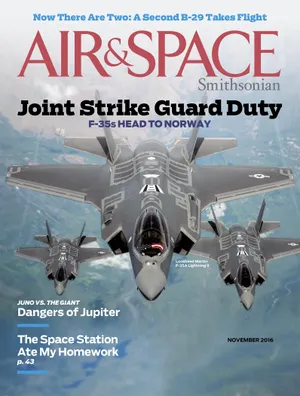How One Planetary Scientist Became a Cold War Spy For the CIA
Code name: Stonehouse.
:focal(1629x1596:1630x1597)/https://tf-cmsv2-smithsonianmag-media.s3.amazonaws.com/filer/c3/fa/c3fab87a-7904-4602-88d4-2f5e5f5d2c6e/18a_on2016_opener_spot_live.jpg)
The CIA called Jim Burke in 1963, just after he finished up as project manager of the Ranger satellite program and went back to NASA’s Jet Propulsion Laboratory.
The USSR had just tested two enormous Lunik rockets, a dead giveaway they were getting ready to send up big space probes. “We wanted to know how their approach differed from ours,” says Burke. “We wanted to gain from their experience wherever we could.” So Burke packed up his family and moved to Langley, Virginia, where he oversaw development of a protocol for intercepting the signals transmitted between the USSR’s spacecraft and its ground station in Crimea.
First, the Americans needed a receiver at the same longitude as the ground station, since the Soviets talked to their probes only when they were over their own territory. An out-of-the-way U.S. Navy installation on the Horn of Africa, in what is now the Eritrean capital Asmara, was the ideal spot. Two giant dishes were constructed at the site, code-named Stonehouse, and outfitted with cutting-edge equipment to detect and interpret radio signals.
“It was a beautiful setup,” says Burke, who from Stonehouse monitored most of the Soviets’ interplanetary missions from 1965 until 1975, when the facility was closed due to local political unrest. The ability to track the Soviet rocket telemetry from launch enabled Burke and his colleagues to ascertain the trajectory of an outbound probe, so they knew where to point their receivers.
They already had a pretty good idea where to look, though. The reason is what Burke calls a “peculiarity of Soviet practice.” The U.S. space program left rockets on the pad for days or even weeks, waiting for an optimal time within a launch window, but the Soviets had a precise day and time that would give them the best trajectory to their target, and they launched at exactly that moment. They also launched lunar missions only in winter or spring, when the moon would be high over Crimea and allow the longest possible day for communicating with the spacecraft.
From the little they could observe, Burke and his colleagues inferred all sorts of information about Soviet missions. For instance, the Americans knew the Soviets were trying for a landing on the moon, so when Luna 6 missed by 100,000 miles, the only explanation was that the spacecraft carried enough extra fuel for a retro-rocket landing maneuver, but had accidentally used it all during what was meant to be a small course correction.
“In one of their missions they sent a wrong command and they didn’t wait around to see the reflection,” says Burke. “...and they lost the mission.”
Years later, when the cold war had warmed enough to allow open collaboration between Soviet and American engineers, Burke ran into Nikolai Tolyarenko at a conference. They soon realized that they both had worked at their countries’ ground stations, and both had been there when Luna 9 landed on the moon in 1966.
The Soviets had by that point failed 11 times to land unmanned spacecraft on the moon. During the 12th attempt, Burke (and Tolyarenko), watching the Doppler shift in the craft’s telemetry signal, could see the spacecraft slowing until it came to a gentle stop. Then the signal disappeared.
“We said, ‘Oh no, they got it all the way there and then it failed,’ ” Burke says. Four minutes passed.
Then suddenly Luna 9 was sending home the first images taken from the moon’s surface. Tolyarenko insisted that those four minutes of silence had been planned, but Burke is skeptical.
“I’d say, ‘Weren’t you guys worried when you didn’t see anything?’ And they’d say, ‘Oh, no, we didn’t worry, we knew it was going to come on the air.’ ” A second passes, then Burke says, “Baloney.”
